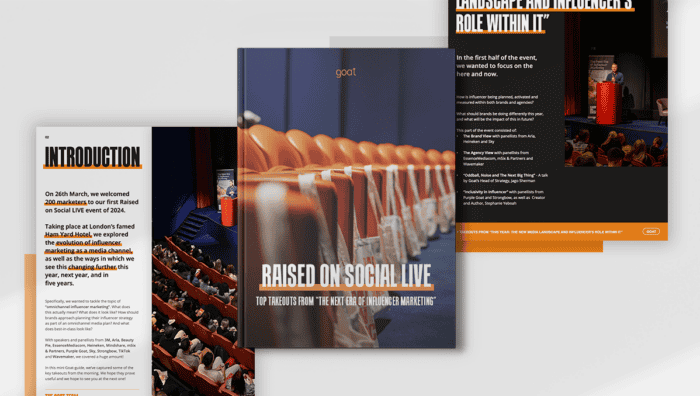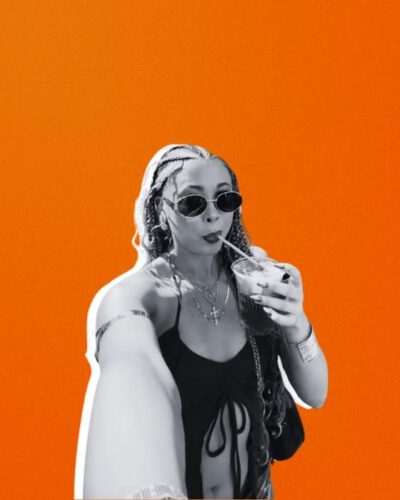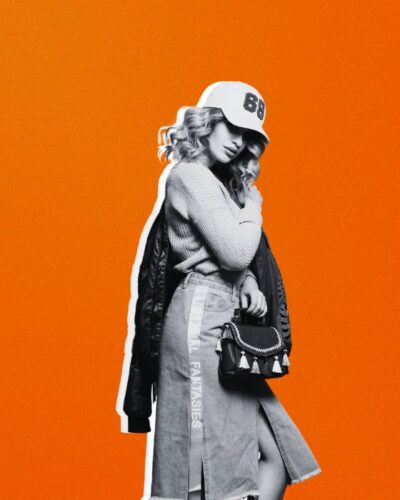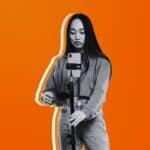Paid advertising is up there with the most powerful marketing tools available to brands and agencies. At its core, this marketing channel enables businesses to display their ads to specific audiences. These lucrative spots are won by bidding on real-time auctions across different networks and platforms – wherever they want their ads to appear.
In 2022, paid ad spend on social media networks in the US surpassed $66 billion, and this is expected to leap to $82 billion by 2025. But where paid media really gets exciting is when it incorporates influencers and is even run through the influencers’ own channels.
Today’s argument is the effectiveness of ads powered by influencers versus the effectiveness of ads run with brand-owned assets. Stick with us as we outline the basis for which strategy works best for your brand and how you can use the two together to drive the best results.

Contents
The advantages of running brand-led paid media
When influencer content is used in brand-led paid
Why using influencer content as an ad often works better
The advantages of running influencer-led paid media
How can brands leverage influencer-led paid media effectively?
Understanding paid media
Paid media, or paid advertising, enables businesses to appear on digital platforms such as social media.
With this channel, brands can pay for visibility and engagement among specific target audiences. These ads leverage extensive user data provided by the host platform – Facebook, Instagram or TikTok – for example, which are used to deliver highly targeted messages based on demographics, interests, and more.
Paid media assets come in various formats, including image and video ads, carousels, stories, sponsored posts, and more. This gives the channel a lot of flexibility, enabling brands to achieve different objectives, like driving website traffic, generating leads, and even boosting sales. What sets paid ads apart is their ability to reach users where they’re already spending significant time, consuming content relevant to their interests.
With all things considered, paid media campaigns play a crucial role in the modern marketing mix, providing a direct path to consumer interaction and brand engagement.
What is brand-led paid media?
Brand-led paid media refers to advertising campaigns where the content is created and controlled by the brand itself. These ads focus on promoting the brand’s message, identity, and products across various platforms, ensuring consistent branding and strategic targeting to reach a broad audience and achieve specific marketing objectives.
The advantages of running brand-led paid media
Control and consistency
Brand-created assets give businesses the full control over the messaging, tone, and visual identity.This helps to ensure that every campaign element aligns perfectly with the overarching strategy. With brands gaining more of a say, this provides a more consistent look and feel across all marketing channels, which helps to reinforce brand identity.
Customization and adaptability
Brands can create ads specifically for different audience segments, and optimize them for various stages of the customer journey. Since the brand controls and owns the content, it’s easier to make quick adjustments based on performance data.
Enhanced sales focus
Influencer content tends to be more conversational and relatable than content from brands, that’s the beauty of it after all. However, looking at it through a sales lens, it’s much easier for brands to use direct sales-driven messaging and call-to-actions in their own content, than it is to implement into influencer content.
When influencer content is used in brand-led paid
Influencer content can be, and is often, integrated into brand-led paid. Brands have the capacity to purchase the rights to a piece of influencer content and run this as an advert through their own brand channels.
At Goat for example, we might work with influencers to deliver an organic campaign for NIVEA on TikTok. They will post on their own channels but we could also purchase the rights to the best performing organic content and run this as an ad through NIVEA’s TikTok channel.
We’ve done this before, in fact. In our campaign for supermarket retailer, Tesco, we found that influencer assets drove a 3x higher VTR (view-through-rate) on TikTok and a 2x higher VTR on Meta than the brand’s BAU.
Why using influencer content as an ad often works better
The reality is that people don’t like to feel like they’re being sold to, and when scrolling through TikTok, people are more likely to skip something that immediately stands out as an ad. What other advantages does influencer marketing have over its adversary?
Content first, ad second
Ad creatives made by creators not only tend to feel more authentic and native to the platform, but they also have the look and feel of a peer-to-peer recommendation. Ads delivered through an influencer’s personal platform often carries more credibility, as people tend to be less skeptical compared to traditional brand advertising. When an ad is presented by a familiar and trusted creator on their own channel, it can be really impactful.
Harness cultural relevance and targeted reach
Influencers typically have a dedicated, and often niche, follower base. Brands have the opportunity to tap into these targeted communities, which can be difficult to achieve through traditional brand-led ads.
Not only that, but influencers are at the forefront of trends, they have a pulse on what’s going on across the social and digital landscape. Because of this, their content becomes highly relevant during cultural shifts, making it current to audience interests.
Let creators do, what creators do best
Influencers are the experts when it comes to content creation. They bring a unique style and creativity, offering diverse content that is far different from traditional brand-led ads. Influencers should be given the freedom to create. This means less restrictive briefs that enable creators to have as much creative freedom as possible.
Content created by influencers tends to generate more organic engagement, as their audience interacts with their posts more frequently than the followers of a brand. When integrated with paid, the interest in these posts can skyrocket.
This is not to imply that brand-led paid media should be abandoned. For a comprehensive influencer marketing strategy, it’s essential to combine both approaches effectively.
What is influencer-led paid media?
Influencer-led paid media refers to sponsoring influencer content, then running it through that same influencer’s own account.
The advantages of running influencer-led paid media
Ads that come through an influencer’s account can often hold more weight, as people don’t feel the same “bias” wariness that they do with brand advertising. If an ad features a creator they recognize, and it’s through their own channel, that’s extremely powerful.
We can also often tap into the influencer’s own audience data, allowing us to retarget their existing audience of engaged followers or lookalike audiences that are likely to respond to their content.
How can brands leverage influencer-led paid media effectively?
Improve ad receptivity
When ads are delivered through an influencer’s own channel it feels less like watching an ad, and more like consuming content. People may not even notice that it is an ad. This becomes even more effective if the influencer is recognizable to the audience, or someone they already follow and have a built-in connection with them. People are often skeptical towards traditional ads online, influencer-driven ads can help improve how well ads are received.
Align brand and influencer-led strategies
As Chris Robinson, Paid Social Director at Goat, suggests, “Influencer-led paid campaigns can be highly effective at the top of the funnel, aiming to educate, entertain, and inspire. Brand-led paid ads can then be used to retarget and drive conversions. Alternatively, you could use brand-led paid ads at the top and influencer-led ads at the bottom of the funnel to reinforce and validate.”
Ideally, the funnel flows seamlessly from awareness to engagement, consideration, and finally conversion. However, in the fast-paced world of social media, audiences often move unpredictably between stages.
Brand’s must consider the end goal of their campaigns – is it focused on enhancing consideration, or is driving conversions the main goal? Then, determine how brand-led and influencer-led paid media can complement and support each other throughout that process.
Think about the purchase journey
Ultimately, brand products influence every choice, from selecting the influencer to crafting the creative approach. It all depends on what’s being sold.
Is it a high-ticket item that demands careful consideration (like a new phone, vacation, or luxury item), or is it something more impulsive? Does it appeal to emotions? Is it driven by trends? Or is it primarily practical?
These are the defining factors that should be reflected in your influencer-led paid media strategy.
Tailor the content messaging
Whether the aim is to boost consideration, conversions, or both, brands must ensure this is clearly communicated in the creative brief, with content tailored to ultimate objectives.
However, avoid creating a rigid brief that dictates exactly what creators should say or do – this approach rarely succeeds. Instead, provide a clear and concise brief that clearly outlines the campaign goals, how the creators should inspire, educate, or entertain, and any key guidelines or important considerations. In the end, it’s crucial to allow creators the freedom to excel in their own unique style.
Test, learn, optimize, repeat.
Influencer-led paid media should be consistently tested throughout the campaign, not just at the end, to gather insights and ensure the most effective creatives are being displayed.
As Chris advises, “Don’t think you know it all. Some of the things we thought would work well for clients flopped, and others did amazingly. You have to test to find out what people really care about, don’t just make an assumption based on your own preconceptions.”
Are your landing pages letting you down?
Imagine investing significant effort, and budget, in crafting a fantastic customer journey through social media and influencer-led paid campaigns, only for the website experience to fall short.
Unfortunately, this happens more often than it should.
When aiming to drive conversions, it’s crucial that each landing page provides a smooth transition from social engagement to purchase. Consider the platform where traffic is coming from. For instance, when working with Instagram creators that use a polished, high-quality aesthetic, it’s vital that the landing pages reflect that style. On the other hand, if the content comes from TikTok, where creators often use humorous or sketch-style videos, consider how the landing pages might need a different approach to engage this audience.
The goal is to ensure that the transition from platform to purchase feels natural and cohesive.
Concluding thoughts
Influencer content is changing the way audiences engage with promotional content across social media, and wider digital platforms.
As new innovations continue to emerge, influencer content is becoming increasingly effective in areas outside of just social. TikTokers are being used in worldwide brand campaigns that stretch across OOH and website activations as well as social media. Retail media networks like Amazon are placing influencer content across some of the most frequented sites on the internet as a means of hooking audience attention more effectively.
Influencer-led paid is one of the most exciting new media channels of the past few years. And yet, still so many brands aren’t taking full advantage of it. However, this is not to say that brand-led paid media should be abandoned altogether. Brands should be encouraged to align their in-house assets with content created by influencers to maximize their paid output.
As we’ve discussed, a mix between brand-owned media and influencer content, as well as testing and learning between brand-led media and influencer-led media, is imperative for striking the right balance in a successful paid campaign. At Goat, we have this capability and we work with our clients to determine the ideal split, as well as the influencers and content formats/messaging to reach their audiences.
For more information on influencer-led paid and how brands can integrate influencer content into their paid media strategy, get in touch with us!




